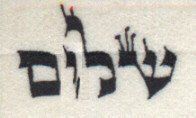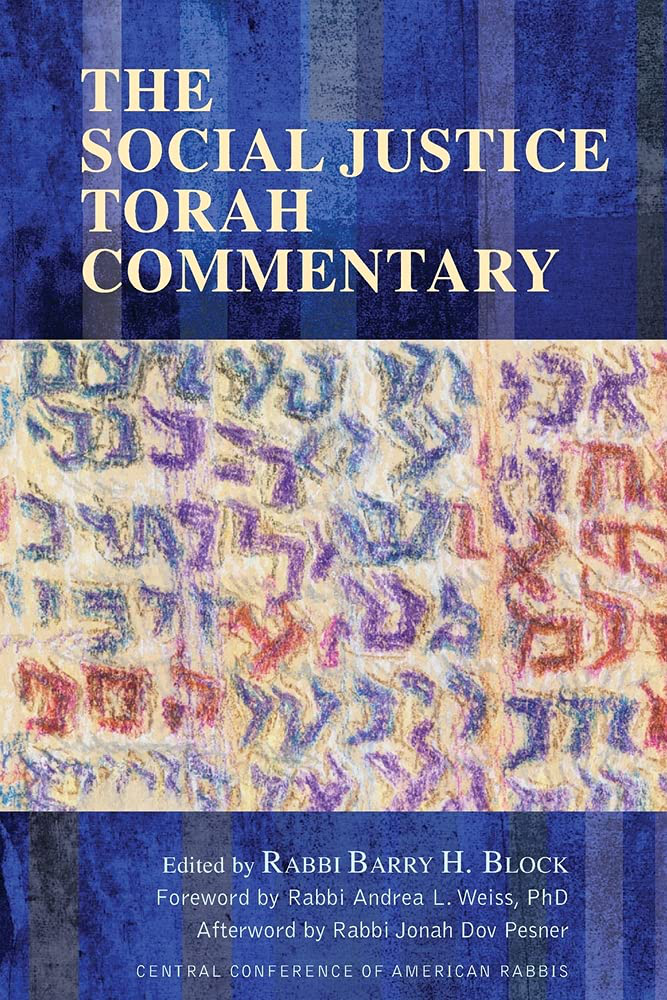Sources from essay by Chris Harrison in The Social Justice Torah Commentary
This fear of the Jewish people's end, in part due to paranoia regarding interfaith relationships and families, has plagued us since Mount Sinai and is unlikely to disappear. Parashat Pinchas is a particularly graphic and blatant testament to this ever-present fear of Jewish demise and the unfortunate lengths zealots have gone to "preserve" Judaism, even at the cost of their souls-and our collective soul.
-Chris Harrison
(י) וַיְדַבֵּ֥ר יְהֹוָ֖ה אֶל־מֹשֶׁ֥ה לֵּאמֹֽר׃ (יא) פִּֽינְחָ֨ס בֶּן־אֶלְעָזָ֜ר בֶּן־אַהֲרֹ֣ן הַכֹּהֵ֗ן הֵשִׁ֤יב אֶת־חֲמָתִי֙ מֵעַ֣ל בְּנֵֽי־יִשְׂרָאֵ֔ל בְּקַנְא֥וֹ אֶת־קִנְאָתִ֖י בְּתוֹכָ֑ם וְלֹא־כִלִּ֥יתִי אֶת־בְּנֵֽי־יִשְׂרָאֵ֖ל בְּקִנְאָתִֽי׃ (יב) לָכֵ֖ן אֱמֹ֑ר הִנְנִ֨י נֹתֵ֥ן ל֛וֹ אֶת־בְּרִיתִ֖י שָׁלֽוֹם׃ (יג) וְהָ֤יְתָה לּוֹ֙ וּלְזַרְע֣וֹ אַחֲרָ֔יו בְּרִ֖ית כְּהֻנַּ֣ת עוֹלָ֑ם תַּ֗חַת אֲשֶׁ֤ר קִנֵּא֙ לֵֽאלֹהָ֔יו וַיְכַפֵּ֖ר עַל־בְּנֵ֥י יִשְׂרָאֵֽל׃ (יד) וְשֵׁם֩ אִ֨ישׁ יִשְׂרָאֵ֜ל הַמֻּכֶּ֗ה אֲשֶׁ֤ר הֻכָּה֙ אֶת־הַמִּדְיָנִ֔ית זִמְרִ֖י בֶּן־סָל֑וּא נְשִׂ֥יא בֵֽית־אָ֖ב לַשִּׁמְעֹנִֽי׃ (טו) וְשֵׁ֨ם הָֽאִשָּׁ֧ה הַמֻּכָּ֛ה הַמִּדְיָנִ֖ית כׇּזְבִּ֣י בַת־צ֑וּר רֹ֣אשׁ אֻמּ֥וֹת בֵּֽית־אָ֛ב בְּמִדְיָ֖ן הֽוּא׃ {פ}
(1) While Israel was staying at Shittim, the menfolk profaned themselves by whoring with the Moabite women, (2) who invited the menfolk to the sacrifices for their god. The menfolk partook of them and worshiped that god. (3) Thus Israel attached itself to Baal-peor, and יהוה was incensed with Israel. (4) יהוה said to Moses, “Take all the ringleaders and have them publicly impaled before יהוה, so that יהוה’s wrath may turn away from Israel.” (5) So Moses said to Israel’s officials, “Each of you slay those of his men who attached themselves to Baal-peor.” (6) Just then a certain Israelite man came and brought a Midianite woman over to his companions, in the sight of Moses and of the whole Israelite community who were weeping at the entrance of the Tent of Meeting. (7) When Phinehas, son of Eleazar son of Aaron the priest, saw this, he left the assembly and, taking a spear in his hand, (8) he followed the Israelite man into the chamber and stabbed both of them, the Israelite man and the woman, through the belly. Then the plague against the Israelites was checked. (9) Those who died of the plague numbered twenty-four thousand. (10) יהוה spoke to Moses, saying, (11) “Phinehas, son of Eleazar son of Aaron the priest, has turned back My wrath from the Israelites by displaying among them his passion for Me, so that I did not wipe out the Israelite people in My passion. (12) Say, therefore, ‘I grant him My pact of friendship. (13) It shall be for him and his descendants after him a pact of priesthood for all time, because he took impassioned action for his God, thus making expiation for the Israelites.’” (14) The name of the Israelite man who was killed, the one who was killed with the Midianite woman, was Zimri son of Salu, chieftain of a Simeonite ancestral house. (15) The name of the Midianite woman who was killed was Cozbi daughter of Zur; he was the tribal head of an ancestral house in Midian.
This story raises a stark issue of morality for modern progressive Jews. When Pinchas first witnesses Zimri and Cozbi together, he does not break the two apart to prevent them from sinning further. He does not even ask them to stop, so they could have a chance to listen. Fueled by what Rabbi Donniel Hartman aptly refers to as "God intoxication," Pinchas makes himself judge, jury, and yes, executioner, by stabbing two people to death for the crime of having apparently consensual sex. And the Torah seems to be completely okay with his doing so.
Granted, context is key. The Torah is a work written by an ever-dying people about an ever-dying people. Jews have been endlessly targeted and enslaved and murdered by others simply for the crime of existing. We should not be surprised, then, that some of our stories treat zealotry as heroism. The ends, preserving Jewish continuity and purity, justify the means of murder-even premeditated and cruel murder. In the case of Pinchas, his moment of God intoxication seems to be crucial in saving the Jewish people.
-Chris Harrison
אָמַר רַב נַחְמָן: וָיו דְּשָׁלוֹם קְטִיעָה הִיא.
Rav Naḥman says: The letter vav in the word shalom is severed. According to tradition, this letter is written with a break in it, and therefore the word can be read as though the vav were missing.

According to Jewish mysticism, not only every word but every letter of the Torah tells a story. What does a broken vav reveal? A vav looks like a hook-and it acts like one, too: one letter that in many contexts means "and," vav connects things together. So, this alleged "covenant of peace" that connects generation to generation is in fact a broken covenant. Peace achieved through zealotry, even seen as justified in a surface read, isn't really peace at all.
Not only is Pinchas a zealot and a murderer, he's also a hypocrite. Oddly enough, Pinchas is an Egyptian name, and he is a descendant of non-Jewish priests. And yet, his hypocrisy proves an important point: Judaism is an acculturating religious civilization. Pinchas is a man with an Egyptian name who is the product of an interfaith relationship. Moses, our greatest prophet, also has an Egyptian name. Esther's and Mordechai's names may be said to be based directly on those of Babylonian deities. The names of our Jewish months are also Babylonian. Pinchas, whose name is a living reminder of Mitzrayim (Egypt) itself, thought it necessary to murder two people of different tribes for engaging in consensual sex out of a fear of losing Jewish purity. It would be laughable if it weren't devastating.
-Chris Harrison
How do we create a real covenant of peace? In short, by not being like Pinchas. If we are to create a Jewish community that is embedded in real peace, we must start by abandoning the self-defeating notion that interfaith relationships are a threat to Judaism and recognize the real threat to Judaism: keeping people out.
We must ask ourselves: Is our Judaism so important that we want to emulate a murderer, a fanatic, just to keep it "pure"? Is our tradition, which commands no fewer than thirty-six times that we protect the stranger, so fragile that including, uplifting, and loving those who seek to be part of our communities who are Jewish adjacent will cause our way of life to crumble? That's not the Judaism I know, nor is it the Judaism I want.
-Chris Harrison
Discussion Questions by Ariel Tovlev
Harrison begins this chapter with the idea that Jews have often thought of themselves as an “ever-dying people.” What do you think of this expression? Are the Jews an “ever-dying people”?
Why was Pinchas given a b’rit shalom, a covenant of peace? Why is this potentially problematic? How do the rabbis add complexity to the b’rit shalom, and what can their addition teach us?
What is Harrison’s alternate image of earning a covenant of peace? What is exciting and what is challenging about his vision? How can we actively work toward a covenant of peace, either Harrison’s or your own?




